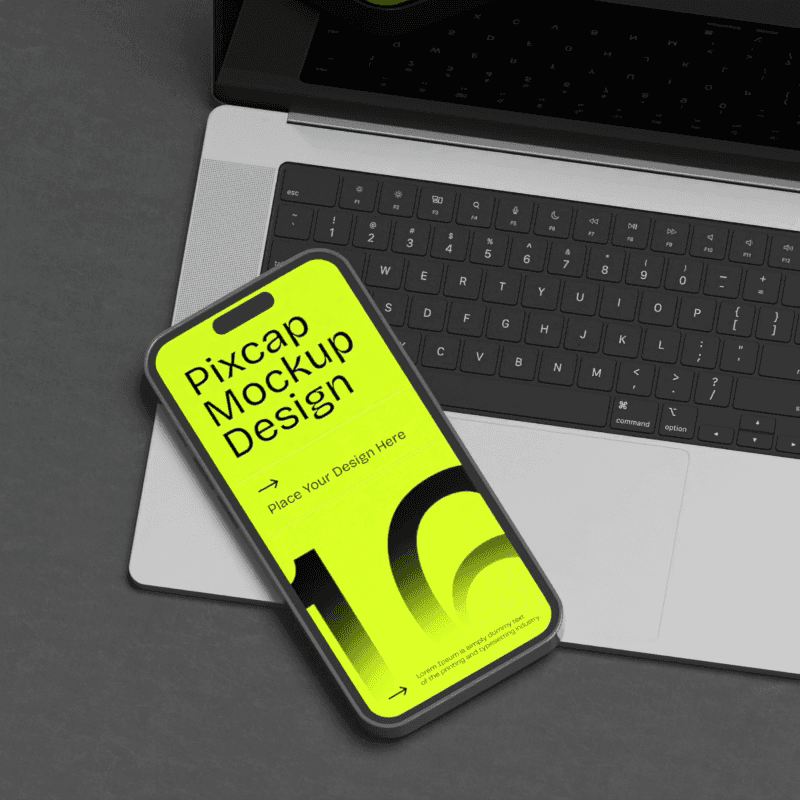Imagine for a moment stepping into a training room where the boundaries between physical reality and digital content all but disappear. You learn by interacting with three-dimensional simulations that allow you to observe, dissect, and manipulate objects that would be impossible or impractical in the real world. This is not a vision from the distant future—it's happening right now through Augmented Reality (AR) in training and education.
Introduction to Augmented Reality in Training and Education
In today’s fast-paced digital age, innovative technologies are revolutionizing how we learn and train. Among these innovations, Augmented Reality stands out as a transformative force reshaping our educational experiences. By integrating virtual components into our tangible environment, AR offers a new dimension of interactive learning – one that cultivates an immersive atmosphere for students and professionals alike.
Definition and explanation of augmented reality (AR)
Augmented Reality can be defined as an enhanced version of reality created by overlaying digital information on top of what we naturally perceive through our senses. Unlike Virtual Reality (VR) which completely replaces the user's environment with a simulated one, AR adds to the existing world as it is.
Here's how it works: using devices such as smartphones, tablets, or specialized glasses, AR applications superimpose text, images, or 3D models onto the real-world view perceived by the camera or lens. This creates an interactive experience where physical and virtual elements coexist in real time.
Importance of AR in the education and training sectors
The value of Augmented Reality in training and education lies in its power to enhance both teaching methods and learning outcomes. Engaging learners through visualized concepts provides clarity on complex subjects that may not be easily conveyed through traditional textual or auditory means.
Moreover, AR fosters hands-on learning without any associated risk—something especially valuable where mistakes could have serious consequences - think medical training or aerospace engineering. The technology also personalizes education; it can adapt to individual learning curves ensuring no student gets left behind.
By bringing abstract concepts to life and offering simulation-based tools at one's fingertips without additional resources or locations necessary for practice sessions – this indeed represents the next frontier of educational innovation.
Use Cases of Augmented Reality in Training
Augmented Reality (AR) is revolutionizing the way we learn and train across various sectors. It's not just an advancement; it's a whole new dimension that introduces interactive, immersive learning experiences unlike anything before. Let me guide you through some fascinating use cases where AR is enhancing training and education, proving its worth beyond mere novelty.
AR for Classroom Education
The traditional classroom is morphing into a dynamic learning environment with AR injecting vitality into lessons. Picture history students walking through ancient ruins or biology pupils dissecting virtual frogs right at their desks; these are current realities with AR. Here’s how it works:
Interactive 3D Models: Students manipulate complex structures, from molecules to monuments.
Gamified Learning: Turning lessons into engaging challenges enhances motivation.
Immersive Storytelling: Bringing narratives to life deepens understanding of literature and history.
In essence, augmented reality has removed the barriers that once constrained visual and experiential learning in classrooms.
AR in the Space Industry
Ever dreamed of being an astronaut? With augmented reality programs, space industry trainees can now immerse themselves in spacewalks right from Earth. Complex machinery repairs and equipment handling are practiced on virtual models before touching the real things, minimizing risk and maximizing confidence.
AR in Medical Education and Training
Imagine medical students practicing procedures on virtual patients or exploring human anatomy layer by layer without incisions. That's the power of AR:
Patient Simulations: Replicates high-risk scenarios without endangering lives.
Anatomical Overlays: Offers a detailed view of internal organs from every angle. Let’s not forget about postgraduate doctors who refine their skills through continued AR-facilitated training, staying abreast with cutting-edge techniques.
AR in Military Training
On the battlefield, stakes are high, making AR critical for military exercises. Soldiers rehearse missions using terrain overlays and simulated environments to mimic real-world operations accurately. This adaptive training tool significantly reduces real-world risk exposing troops to everything from urban warfare to disaster response scenarios virtually first.
AR in Manufacturing Training
Within manufacturing plants, precision is key—and costly mistakes lurk around each corner. Enter AR:
Workflows Visualization: Exhibits procedural steps directly onto machinery or parts.
Maintenance Assistance: Provides instant guidance during repair or assembly tasks—potentially saving companies time and resources while fostering self-reliance among staff.
By presenting information contextually, augmented reality assures a more competent workforce adept at navigating complex industrial landscapes.
AR in Museums
Gone are days when museums were solely about looking at artefacts behind glass panes. Through augmented reality:
Hidden Stories Unfurl: Giving visitors deeper insights into historical objects.
Interactive Exhibits: Engaging people beyond passive observation—transforming visits into conversations with history.
As patrons point their devices at exhibits, narratives leap out invitingly, promoting an enriched appreciation for our collective past imbued with relevance today.
AR in Retail
Consider this – retail employees mastering customer service by interacting with AI-driven avatars representing patrons from all walks of life. Or warehouse workers locating items faster due to overlayed maps guided by augmented reality pointers—a genuine testament to efficiency facilitated by technology!
AR for Health & Safety
In industries fraught with potential hazards like construction or energy:
Hazard Recognition Training: Users learn safety protocols within simulations mirroring actual site conditions.
Emergency Response Drills: Teams practice responding promptly to incidents like fires without any actual flames involved.
Herein lies the value proposition of augmented reality—it allows individuals to encounter perilous situations minus any peril whatsoever—a win-win for health & safety standards everywhere!
From classrooms to combat zones, augmented reality serves as an instructional cornerstone around which novel educational scaffolding is built—a fusion of tradition with innovation seamlessly integrated into efficient training regimens across these diverse fields.
Benefits of Augmented Reality for Training and Education
The incorporation of Augmented Reality in Training and Education is revolutionizing the way we learn and train. By superimposing digital information onto the real world, AR creates immersive experiences that enrich both academic learning and professional development.
Enhanced Learning Experience with AR
Augmented Reality provides a multisensory learning experience that captivates students' attention unlike conventional methods. Here's how:
Engagement: Interactive visuals grab learners' interest, ensuring the training material is more engaging.
Visualisation: Complex concepts can be visualized 3D structures or animations.
Interactivity: With AR, learners can manipulate virtual objects to understand their properties better.
Personalization: Content can adapt to meet individual learner’s needs, pace, and style.
Such experiences make abstract ideas tangible; solidifying understanding results in a deeper comprehension that sticks long after lessons end.
Effectiveness of Learning Materials with AR
Studies have shown that retention rates for education delivered through traditional means pale in comparison to more technologically integrated methods. Here's why AR takes effectiveness up several notches:
It enables storytelling within educational content, making it resonate more strongly with learners.
Task completion times improve as users find interactive instructions easier to follow than static images or text.
Mistakes reduce substantially since feedback from AR applications guide performances in real-time.
By integrating such dynamic materials into curricula or training programs, educators witness significant improvements in proficiency and application of knowledge.
Affordability and Accessibility of AR learning
One might think such cutting-edge technology comes at a steep price but consider these points:
There are various open-source platforms where you can create AR experiences without hefty investments.
Off-the-shelf smartphones and tablets with cameras have enough power to run basic AR applications — devices many already own.
The scalability - once an application is developed, it costs little to nothing to duplicate the experience across countless devices.
This accessibility empowers educators across the globe to integrate innovative solutions even on modest budgets.
Wide Range of Fields Benefitting from AR training
Augmented Reality has found its place far beyond tech savvy classrooms; here's who else is reaping its rewards:
Space Industry
Medical Education
Military Training
Manufacturing Workers
Museum Curators and Visitors
Retail Associates
Health & Safety Trainees
Each area uses bespoke applications designed specifically for their unique challenges—proving just how versatile this tool can be irrespective of one's domain.
Ensuring Safe Training Environments with AR
Safety remains paramount in practical training environments like medicine or heavy machinery operation when mistakes could be fatal. That said, Augmented Reality allows for risk-free simulation by creating virtual scenarios where harmful consequences are non-existent:
Novices hone skills without endangering themselves or others.
Allows repeat practice until actions become second nature.
Forgiving format removes fear from the learning process — promoting confidence when facing real-world tasks.
In essence, what augmented reality brings to the table for training and education isn't just advancement—it fosters innovation while maintaining safety protocols every step of the way.
Application and Implementation of Augmented Reality for Education and Training
The integration of augmented reality in training and education is reshaping learning paradigms, offering unique opportunities for interaction with educational content. By augmenting the real world with digital overlays, learners receive an enriching experience that bridges the gap between theoretical knowledge and practical application.
How to Get Started with AR in Education and Training?
Embarking on the journey to include augmented reality in your educational or training program can seem daunting at first glance. However, by breaking it down into manageable steps, one can effortlessly navigate through the initial phases:
Define Your Objectives: Determine what you aim to achieve by incorporating AR. Is it to enhance engagement, simplify complex concepts, or offer hands-on training without the risk?
Research AR Tools: There's a variety of AR software available that caters to education and training needs. Do some digging into which platforms align best with your goals and resources.
Pilot Programs: Start small with pilot projects to test the waters before diving in fully — this could involve a single lesson plan or a short training module.
Gather Feedback: Critical evaluation from both educators/trainers and learners is invaluable as it will guide future improvements.
Scale Up: Once comfortable with pilot results, gradually expand your use of AR across other areas within the curriculum or training programs.
Taking these steps ensures that initiation into augmented reality is well planned and aligned with broader educational objectives.
Building Incredible AR Apps for Education & Training
The creation of compelling augmented reality applications presents an avenue through which trainers and educators can truly revolutionize how subjects are taught and learned. Here are pivotal considerations when building an AR app:
User Experience: Focus on creating intuitive interfaces that engage users without overwhelming them.
Content Relevance: Make sure that the digital overlays provide valuable insight beyond what traditional methods offer.
Interactivity: Enable users to interact with virtual objects; for example, by rotating models or triggering animations for a more dynamic learning process.
Customization: Adaptability will allow instructors to tailor experiences to suit different learning styles or subject complexities.
By focusing on these elements when developing AR applications, institutions can deliver transformative learning experiences that not only captivate but also deeply educate those who use them. The implementation phase may require partnering with seasoned developers or investing in upskilling current staff members—a critical step towards bringing these innovative tools into reality for learners worldwide.
Innovation means continually pushing the boundaries of what is possible in education—and augmented reality stands out as a leading force in this quest. Through its thoughtful application and implementation, we're equipping today’s learners with insights like never before – visually rich, interactive, and inherently engaging content at their fingertips. The march toward tomorrow's tech-infused classrooms continues unabatedly; embracing augmented reality today might just be the stepping stone needed for future leaps in education excellence!
How Augmented Reality is Transforming the Education Industry
The introduction of Augmented Reality (AR) into the education and training sectors has initiated a paradigm shift, fostering a revolutionary approach to knowledge transfer and skill acquisition.
The Impact of AR on the Learning Experience
Augmented Reality in Training and Education is not just about novelty; it's about enhancing how learners engage with content. Traditional learning methods often struggle to captivate or maintain students' attention, but AR brings a new level of interaction. Let's delve deeper into its profound effects:
Visualization: AR converts abstract concepts into visual experiences. Complex theories in physics or intricate biological structures can be virtually dissected and explored from multiple angles, transforming the learning process from static memorization to dynamic understanding.
Engagement: With gamification elements, augmented reality apps incentivize learners through interactivity. This helps foster motivation by making lessons feel more like a journey of discovery than an obligation.
Interactivity: AR allows users to manipulate virtual objects as though they're tangible, which can lead to better cognitive retention. Picture medical students practicing procedures on virtual patients – mistakes are inconsequential, yet the hands-on experience is immensely valuable.
Through immersive scenarios and real-time feedback, AR serves not only as a pedagogical tool but also as an interface for infinitely creative educational environments.
Implementing Augmented Reality in Educational Settings
Embracing AR within educational institutes requires strategic planning and thoughtful implementation. For institutions ready to embark on this transformative journey, here are some actionable steps:
Identify areas of study that will benefit most from visualization and interactivity offered by AR—subjects where traditional teaching tools have limitations.
Secure buy-in from decision-makers on investing in relevant technology and AR content creation—it's crucial for successful adoption.
Train educators not just in the technical use of AR solutions but in integrating these tools seamlessly into their curriculum—this ensures that technology enhances rather than disrupts the learning flow.
Partnering with tech innovators can facilitate customized app development tailored to specific educational goals—ensuring that both instructors and students get the best out of what augmented reality offers.
By leveraging these innovative strategies, Augmented Reality possesses boundless potential—it's reshaping traditions while opening doors to entirely new possibilities for learners across the globe. As we move forward within our digitally-dominated era, it becomes increasingly clear that Augmented Reality in Training and Education isn't just a fleeting trend—it's an essential component toward building a future-proof education system.
Future Prospects of Augmented Reality in Education and Training
The educational landscape is on the cusp of a technological renaissance, and augmented reality (AR) sits at the heart of this imminent revolution. The integration of AR into education and training programs heralds a future rich with interactive learning experiences that foster deeper engagement, improved comprehension, and retention among learners.
Projection of AR Growth in Learning Environments
As educators constantly hunt for strategies to enliven curriculums and connect with digital-era students, augmented reality emerges as a promising ally. Industry forecasts suggest that AR's role in training and education will only expand. This growth is driven by:
Increasing accessibility to AR-enabled devices
More intuitive AR application development tools
A surge in demand for remote and technologically enhanced learning methods
With these factors propelling its adoption, we can expect to see a more vibrant integration of augmented reality across an array of educational disciplines.
Pioneering Pedagogical Paradigms
Augmented reality doesn't merely add a layer of glamor to existing educational content—it fundamentally restructures pedagogical approaches. Here's how AR might influence tomorrow’s classrooms:
Customized Learning Journeys: Integrating AR into lesson plans allows for personalized education paths suited to individual learning styles.
Gamified Experiences: By turning lessons into interactive games, students are likely to find studying less tedious and more motivating.
Global Classroom Walls: Augmented reality possesses the potential to connect learners from various geographical locations in unprecedented ways.
These pioneering shifts promise not just incremental changes but strides towards truly student-centered learning landscapes.
Breaking Boundaries in Professional Development
Professional skills development stands on the threshold of transformation through AR implementation. Industries reliant on high-stakes decision-making or precise technical acumen are adopting augmented reality for its powerful applications:
Surgeons practicing complex procedures through detailed anatomical overlays
Engineers visualizing infrastructure projects within real-world contexts
Retail employees rehearsing customer interactions using virtual scenarios
Such immersive simulations can expedite competency building while dramatically reducing risk during training phases.
Augmented Reality as an Equalizing Force
Finally, one cannot overlook augmented reality's role in democratizing education. Remote regions previously impeded by scant resources could leverage AR to bridge gaps:
Teachers using AR apps to provide enriched illustrative content without needing physical materials
Students accessing world-class expertise through virtual lectures overlaid onto their immediate surroundings
This capability presents exciting prospects where access inequalities could dwindle—untapping global human potential like never before.














